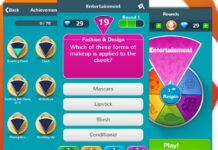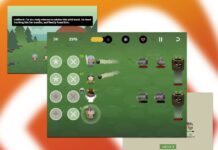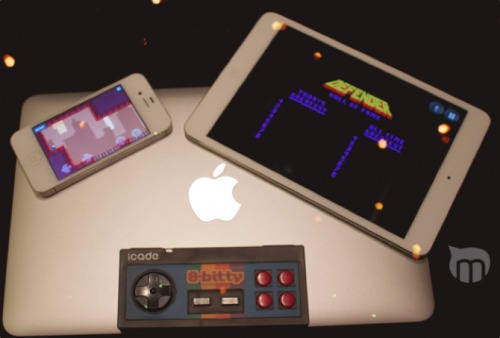
I know that we’ve seen it before, but it still surprises me that my iPhone can play PS2 games now. Our first game is a remake of the PS 2 entry in the classic JRPG franchise that isn’t Final Fantasy. An instant indie classic is also reviewed this week, so fans of indie games or personified geometry shouldn’t skip that one. We also have a review of a couple of sequels on iOS. It is interesting to see how even popular mobile games have reacted to the changing trends in game design.
Table of Contents
Dragon Quest VIII – iOS(Universal)
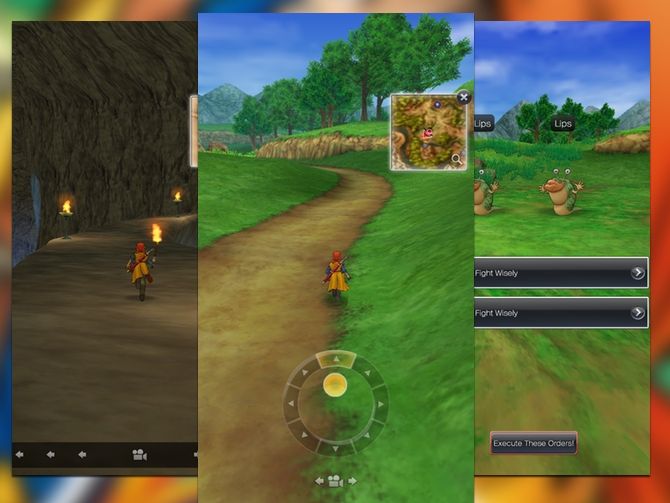
It’s still weird to see games for the Playstation 2 come out on a phone. Dragon Quest VIII brought together two rather large Japanese icons, the Dragon Quest series, and Akira Toriyama. Dragon Quest is probably one of the most beloved RPG franchises in Japan, though it is has never been nearly as popular here in the US. Toriyama is the manga author and character designer behind classics like Ranma 1/2 and Dragon Ball. The combination netted a popular entry in the series that was recently ported to iOS. The player takes the role of a castle guard who survived a magical attack that left the King and Princess cursed to be a troll and a horse respectively. You’re aided by a former thief whose life you saved on a quest to free the royalty of their curse. Of course, there’s lot of monsters to slay along the way.
There is a thread in JRPGs that wants to make the gameplay an almost optional portion of the game. Dragon Quest VIII might be one of the earliest examples of this trend, as the game defaults to single button combat. If you leave the defaults in battle, your characters will attack, heal, and use magic in a good balance. You’ll still need to manage skill points, equipment, and other character decisions, but the actual combat could be entirely hands off if you choose. You can take a traditional approach, and lay out your attacks and skills each turn. The iOS port has a rather unique design. The game only plays in portrait with a virtual d-pad, then your various actions in the world pop up as icons on the screen. It’s a novel approach that recreates those old speciality RPG controllers for consoles.
What’s Good:Good character designs and story, unique control scheme.
What Sucks: Battles can be nearly automated.
Buy it?: Fans of the franchise should cheek out how it translates to mobile. JRPG fans should check out this classic gem. Grab Dragon Quest VIII for $19.99 on the App Store.
Red Shift – iOS(Universal)
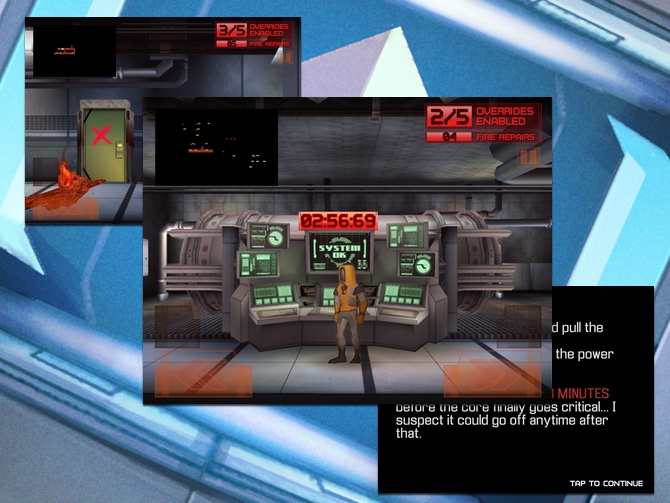
You have four minutes to set all the overrides in the Power Plant and stabilize the core before it goes critical, vaporizing you and everything in the surrounding 250 miles. Red Shift gives you four minutes to complete your task, as you search room to room for the overrides. You’ll need to collect fire extinguishers to clear your path. The power plant is a series of long linked corridors, and collapses have impeded your progress. I’ve died a few times playing the game only finding the first few overrides. If you do manage to find all of the overrides, you’ll need to have enough time to race to the core and stabilize it. Once you’ve beat this initial scenario, you’ll unlock a new “entry.” This gives you more story behind the power plant, but they also increases the difficulty.
Red Shift is a simple game. However the survival scenario and countdown are both really compelling. You can complete the game in under five minutes, but the map is scrambled every time, meaning each time you play the game is slightly different. The new entries make the game more interesting as well. When you first play you get an indicator on the mini-map of where all the doors and fires are in the plant, in the second entry your map draws as you explore making it more difficult to work out where the overrides are. The third then makes your map fade over time, and so on. It’s interesting to see a game that plays with your meta-knowledge as a way to increase difficulty. Usually you see games work with timing and accuracy to increase the difficulty, instead this game peels back the layers of information given to the player to make it more difficult. Adding story as you play through harder difficulty levels is a rarity for a shorter game like this, but it does ensure that you’ll stick with the harder challenges, even if you aren’t an achievement hunter. The story lays out the details behind the plant’s opening and its controversial design. It’s pretty interesting, but it’s limited to two text screens before the game in each difficulty.
What’s Good: Quick play, lots of replay value.
What Sucks: Story limited to a couple of text screens.
Buy it?: If you like interesting design choices, or a more frantic take on the survival genre check out Red Shift. Grab it for $1.99 on the App Store.
Thomas Was Alone – iPad
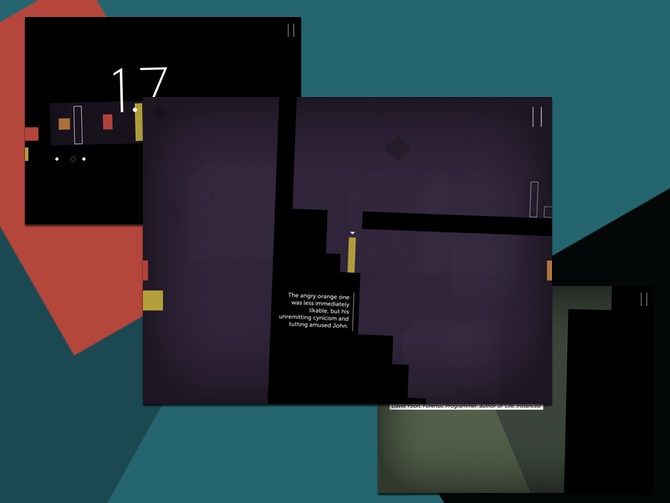
Making a platformer where the characters are little more than an assortment of geographic shapes would get most developers accused of laziness. For Mike Bithell, you can only say he created something that was genius. This is what minimalism should look like, it’s simple, but there’s a whole host of complex level design and lighting effects. but quickly the story of a newborn AI expands to include other AI’s. Each of these are used in tandem to solve levels that increase in complexity with each new character. You have to manage teams, but before you’re working through levels with six or seven characters they are broken down into smaller teams. This is a nice touch that allows for the game to play with different approaches to solving puzzles. The story is told through voice over, and it ends up being fairly charming.
Thomas Was Alone is a game that oozes design from every corner. The minimal characters are paired with some rather well done writing for the narrative. Though the characters never have their own voices, as all of the story is done by the same narrator, they all do have enough personality. One of the better sequences comes when the square decides that its singular ability to float through water makes her a superhero. The levels are all really well designed platform levels, even without the conceit of having to use the team, they would be challenging. That minimal design doesn’t come without a price. I think that the limited nature of the graphics keep the game from being as accessible as it would be. Many people are going to look simply at a game with rectangles and squares for characters and assume that its generic.
What’s Good: Fun story, good level design.
What Sucks:Minimal design may cause people to skip over a really well done game.
Buy it?: Platform and Indie fans should both check out Thomas Was Alone. It is $8.99 on the App Store.
Two Dots – iOS(Universal)
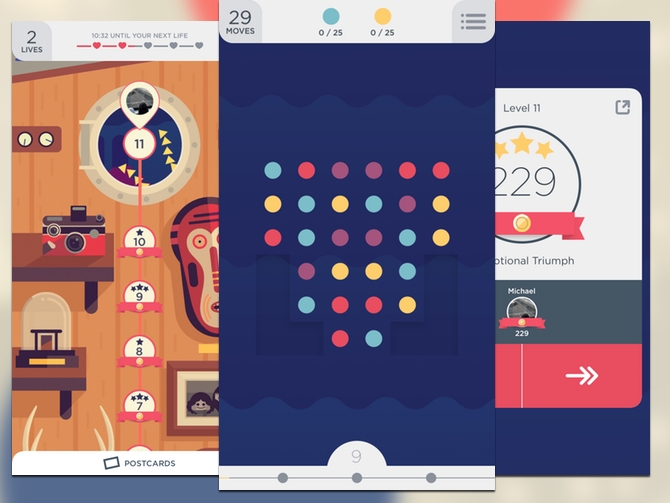
Dots was a quick successor to Letterpress, and received a lot of praise for embracing the new design language of iOS. It was a great game, we reviewed here back when games were combined with Apps. Like many an iOS sensation, Dots came and went, though it stuck around my Puzzle Game folder and I would go back to it form time to time. Two Dots is the sequel to Dots, and it’s a fairly risky expansion on the formula. Rather than just a simple grid of dots, this time you have stages, lives, specific goals, and even a map. If I had to call it something, I would say that Dots has gotten a Candy Crush makeover. There’s a travel theme and a nice old couple on the title screen, and the different sections of the map unlock postcards from their adventures.
I imagine that is going to irritate some people, especially those who loved the original’s minimalism. However, even the music in the new title is charming. I can’t really fault the step away from the clean room. That said, Two Dots is a freemium app. So once your five lives are gone, you’ll have to wait a couple of hours to play again, or shell out a dollar. You can also pay a dollar to add moves when failing a level, or get bombs that will clear out dots you need. The game never nags you, and nothing seems manufactured to force you to shell out the extra cash. The pivot in atmosphere makes the game feel much bigger. The stages ask you to collect a specific number of dots, or clear space for anchors to fall to the bottom of the screen. So rather than just lining up combos, you’re thinking more strategically.
What’s Good: Same fun gameplay with a lot of different scenarios.
What Sucks: Change in atmosphere, and freemium might alienate some fans of the original.
Buy it?: If you like interesting puzzle games, or are a fan of the original not attached to the aesthetic, grab Two Dots. It’s free on the App Store.
Battleheart Legacy – iOS(Universal)
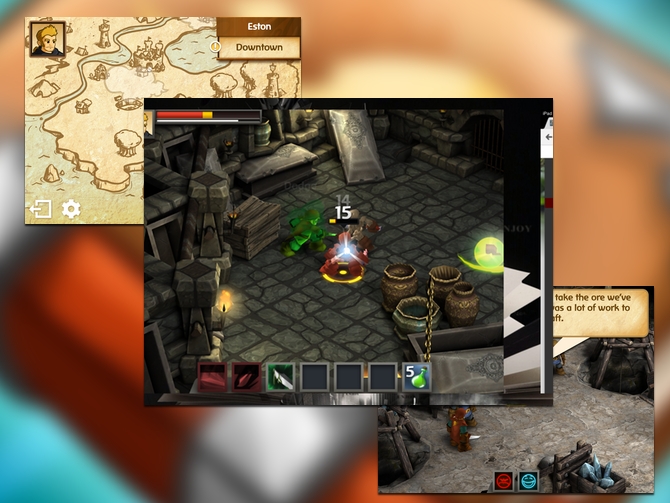
Battleheart: Legacy turns the formula of the first game on its head. While the first was a squad based action RPG, it was essentially arcade in nature. Legacy expands into a full fledged RPG. You can train your character in a host of different classes, each giving you different skills. Fans of traditional RPG leveling will find stats to manage and different equipment to buy. If you’re someone who never liked being tied to one class or skill set, you’ll be able to spread around your XP to whatever skills you’d like. (Well, as long as you manage your stats accordingly.) The game front loads most of these RPG mechanics into a game that actually has a story. The king is looking for several magic stones, and you sign on to help out; though, you can ignore this if you want and just complete the random quests you find around the kingdom. It’s not Skyrim, but it’s as close as you’re going to get with cel-shaded graphics and an iPad.
The combat is exactly like the first game: you tap enemies to target, and then move closer to them by tapping the ground nearby. You then have special abilities that you can use to do extra damage, and these will vary from class to class. The abilities have set cool down times, and in the new game you’re able to stack more of them quickly. I really like the way that Battheart: Legacy combines the combat from the first game with a more focused quest and adventure structure. Areas require you to go back and explore to find new quests and opportunities. This isn’t an epic RPG, but it’s one that invites short bursts of gameplay. It translates the genre into a more mobile accessible format. This game looks great on the iPad, but it seems like it may be more at home on the iPhone where you can play a quick quest here and there throughout your day.
What’s Good: Excellent expansion on the original game.
What Sucks: Story obsessed RPG fans may not get exactly what they are looking for.
Buy it?: If you want to see a way to slim down an RPG for mobile, check out Battleheart Legacy. It’s $4.99 on the App Store.



